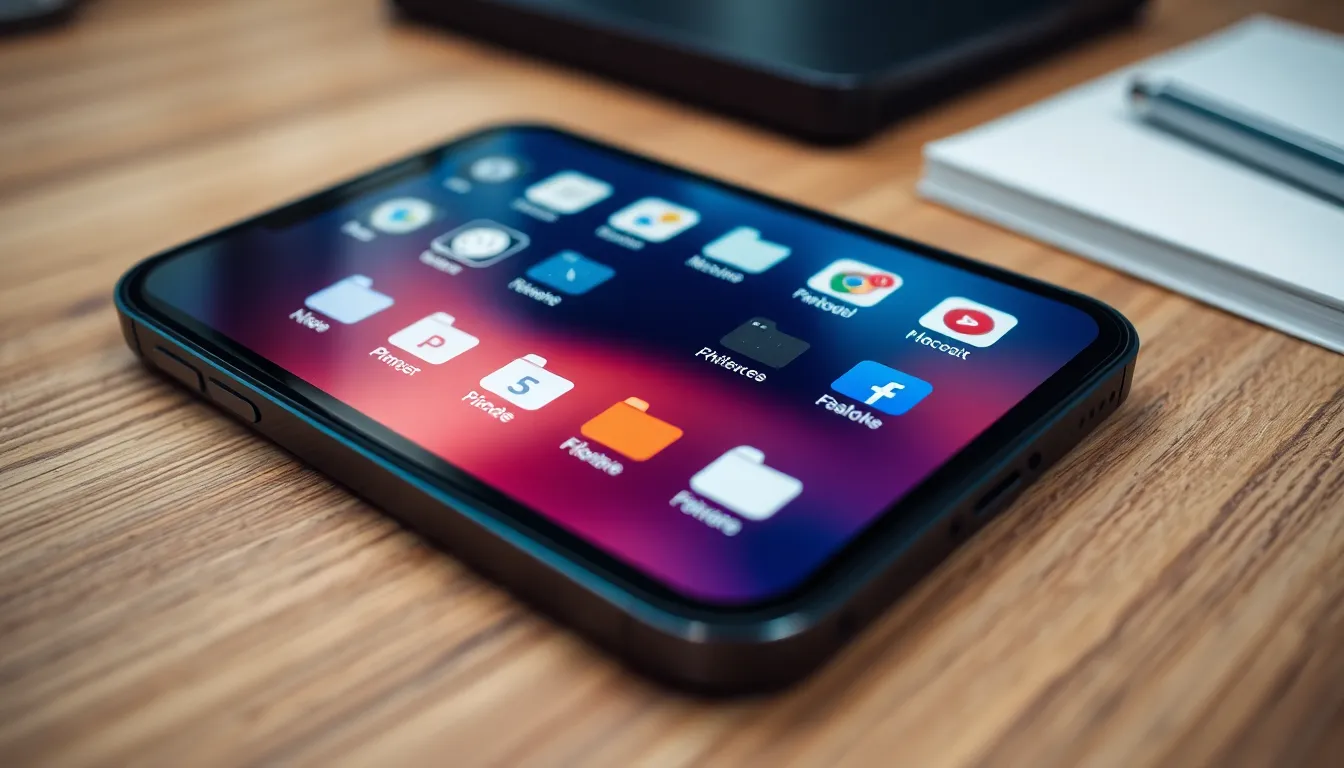Ever felt like your iPhone’s playing hide and seek with your files? You’re not alone. With all those apps and endless folders, finding that one elusive document can feel like searching for a needle in a haystack. But fear not! Unraveling the mystery of your iPhone’s file system doesn’t require a degree in tech wizardry.
Table of Contents
ToggleUnderstanding File Management on iPhone
Locating files on an iPhone can seem overwhelming, but a clear understanding of its file management makes the process straightforward. Familiarity with file organization enhances efficiency and reduces frustration when searching for important documents.
Importance of Knowing Your Files
Recognizing where files are stored improves organization. It facilitates quick access to photos, documents, and other important items. A well-managed file system allows for easier sharing of content with others. Knowledge of file locations helps troubleshoot issues more effectively. Additionally, being aware of storage use can inform decisions about freeing up space.
Overview of Default Files App
The Files app serves as the central hub for file management on an iPhone. This application enables users to browse and organize both local and cloud-based files. Users can easily view files from various sources, including iCloud Drive and third-party services like Dropbox. Navigation is intuitive, allowing users to create folders, move files, and search efficiently. The integration with other apps enhances productivity by simplifying file sharing and collaboration.
Using the Files App

The Files app centralizes file organization on an iPhone. Users can manage local and cloud-based files from sources like iCloud Drive and Dropbox seamlessly.
Navigating the Files App Interface
Navigating the Files app is straightforward. The app displays a clear layout featuring Browse, Recents, and Search tabs. Users tap Browse to see available locations and files. Folders display with icons; users can easily identify documents or images. An organized sidebar shows all file locations, making file navigation intuitive. Users create folders by tapping the “…” icon and selecting New Folder. Effortlessly accessing other apps enhances productivity.
Searching for Files in the App
Searching for files is quick and user-friendly in the Files app. Users tap the Search bar located at the top of the interface. Inputting keywords related to the desired file yields instant results. The app finds files based on names, types, or content. Users can refine searches using filters, enabling effective retrieval of specific documents or images. Saved searches are also possible, simplifying future access. This efficient search functionality streamlines workflow and enhances file management on the iPhone.
Third-Party Apps for File Management
Using third-party apps enhances file management on an iPhone, offering more options and capabilities. Many users opt for these solutions to simplify their organizational tasks.
Popular File Management Apps
Several popular file management apps are available for iPhone users. Google Drive provides robust cloud storage and file sharing features. Dropbox allows seamless syncing between devices, enabling access to files from anywhere. Documents by Readdle stands out with its extensive feature set, combining document browsing and media playback. FileApp offers straightforward management of various file types and local storage options. Each app caters to specific needs, improving the overall experience for users.
Features of Third-Party Solutions
Third-party file management apps present unique features enhancing usability. Enhanced sharing options make collaboration easy with links and permissions. Security features like password protection ensure sensitive documents remain safe. Custom folder structures allow users to organize files as they prefer. Advanced search functions help locate files quickly using filters and metadata. Integration with cloud storage services provides flexibility in managing both local and online files. Users enjoy an extensive range of functionalities tailored to improve their organizational skills.
Tips for Organizing Your Files
Organizing files effectively on an iPhone enhances retrieval and enhances productivity. A few strategies can make file management effortless.
Creating Folders and Labels
Creating folders provides a visual way to organize files. Users can name folders based on categories like Work, Personal, or Photos. This structure simplifies locating files. Additionally, implementing labels helps differentiate various document types. Regularly updating folder contents ensures that everything remains relevant. Frequent reviews also aid in identifying unnecessary files for deletion. A clear folder structure fosters an organized environment that promotes efficient file access.
Using Tags for Easier Access
Utilizing tags allows users to label files with specific keywords. This method enhances searchability within the Files app. Tags enable quick retrieval of related documents, pictures, or notes. Implementing a consistent tagging system proves beneficial, especially for users managing a large number of files. For instance, tagging all project-related materials with a specific label streamlines organization. Accessing files becomes instantaneous when utilizing these tags effectively. Regularly revisiting and updating tags ensures they remain accurate and useful.
Finding files on an iPhone doesn’t have to be a daunting task. By mastering the Files app and utilizing effective organizational strategies users can streamline their file management process. Creating folders and using tags not only enhances searchability but also keeps important documents easily accessible.
Incorporating third-party apps can further improve the experience by offering additional features tailored to individual needs. Regularly reviewing and updating file organization ensures that everything remains relevant and manageable. With these tips in hand users can confidently navigate their iPhone and quickly locate any file they need.


